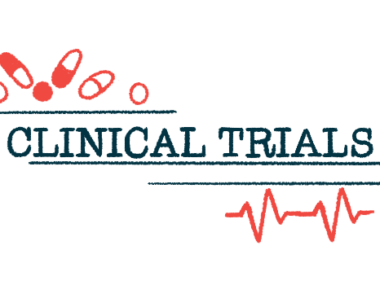FDA breakthrough designation granted to larsucosterol for AH
Durect developing therapy to treat severe alcohol-associated hepatitis
Written by |

The U.S. Food and Drug Administration (FDA) has granted breakthrough therapy designation to larsucosterol, Durect’s investigational therapy for people with severe alcohol-associated hepatitis (AH).
This designation is intended to expedite the development and regulatory review of therapies with the potential to fill unmet medical needs in treating serious conditions. It gives the California-based Durect access to more frequent communications with the FDA, with the goal of bringing the therapy to market faster.
“We’re pleased with the FDA’s decision to grant breakthrough therapy designation to larsucosterol, as it further recognizes its potential to save the lives of AH patients,” James E. Brown, president and CEO of Durect, said in a company press release. “AH has a high mortality rate and no currently approved treatments, so there is a great need for a safe and effective therapy.”
Larsucosterol, also known as DUR-928, had previously received FDA fast track designation, which is also meant to speed a therapy’s clinical development and regulatory review.
Larsucosterol aims to improve cell survival, reduce inflammation
Hepatitis, a condition marked by liver inflammation, is most commonly caused by viruses, but it also can develop due to autoimmune reactions or exposure to toxins, chemicals, or drugs, such as alcohol.
Alcohol-associated hepatitis, called AH for short, can progress to liver damage and failure, which may require a liver transplant, as well as lead to kidney damage and multiorgan failure. Research indicates that nearly one-third of severe AH patients (31%) die after about three months.
Stopping alcohol consumption may not be sufficient to prevent serious complications in AH patients with moderate to severe liver disease.
Corticosteroids, a type of anti-inflammatory and immunosuppressive treatment, can reduce liver inflammation, but their use is limited by contraindications, or recommended prohibitions against the use of a medication. In addition, data suggest that such treatment does not improve AH patients’ survival at 90 days or one year, and increases the risk of infection.
Larsucosterol is an epigenetic modulator, or a molecule that regulates gene activity without altering the DNA sequence. Epigenetic dysregulation has been reported in both acute and chronic liver diseases, including alcohol-associated hepatitis.
The therapy blocks enzymes involved in DNA methylation, an epigenetic mechanism that modulates the activity of genes involved in cell signaling pathways associated with stress responses, cell death and survival, and the production of fatty molecules.
As such, larsucosterol is expected to improve cell survival, reduce inflammation, and lessen fat-related toxicity, which may improve liver function and/or reduce mortality in AH patients. The therapy is administered via an infusion directly into the bloodstream.
Breakthrough therapy designation comes after positive Phase 2 trial data
The FDA’s decision to grant breakthrough therapy designation to larsucosterol was based on top-line data from the Phase 2b AHFIRM clinical trial (NCT04563026). Involving 68 sites across the U.S., Europe, the U.K., and Australia, the study evaluated the safety and efficacy of larsucosterol in 307 adults with severe alcohol-associated hepatitis.
The participants were randomly assigned to receive either one of two larsucosterol doses (30 mg or 90 mg) or a placebo, in addition to standard care. Standard care in the placebo group could include steroids or not, at the investigator’s discretion; however, such medications were not part of the standard care for those assigned the experimental therapy.
The study’s main goal was to compare the rate of mortality or liver transplant after 90 days, or approximately three months, between the larsucosterol and placebo groups. A key secondary goal was to assess differences in 90-day survival.
Top-line data showed that both doses of larsucosterol were associated with a slightly lower rate of death or liver transplant compared with the placebo, but these differences were not statistically significant.
Both larsucosterol doses did demonstrate a clinically meaningful trend in reducing mortality at 90 days relative to the placebo: by 41% in the 30 mg group and by 35% in the 90 mg group.
We continue to finalize the design of our planned registrational Phase 3 trial for larsucosterol, incorporating the recent FDA feedback and promising data from our completed Phase 2b AHFIRM trial.
Among patients in the U.S., who represented 76% of trial participants, larsucosterol treatment was associated with a significantly lower 90-day mortality: by 57% with the 30 mg dose and by 58% with the 90 mg dose.
The therapy was generally safe and well tolerated, with fewer adverse events being reported in the larsucosterol groups compared with the placebo, or standard-of-care, group.
Further trial details will be shared in June in a late-breaking oral presentation at the European Association for the Study of the Liver (EASL) Congress 2024, in Italy.
Durect has met with the FDA to discuss AHFIRM results and the design of a future registration Phase 3 trial, or a study whose data are expected to support the filing of an application seeking the therapy’s approval.
“We continue to finalize the design of our planned registrational Phase 3 trial for larsucosterol, incorporating the recent FDA feedback and promising data from our completed Phase 2b AHFIRM trial,” Brown said. “We look forward to releasing additional clinical data on larsucosterol and potentially bringing this therapy to patients as soon as possible.”






